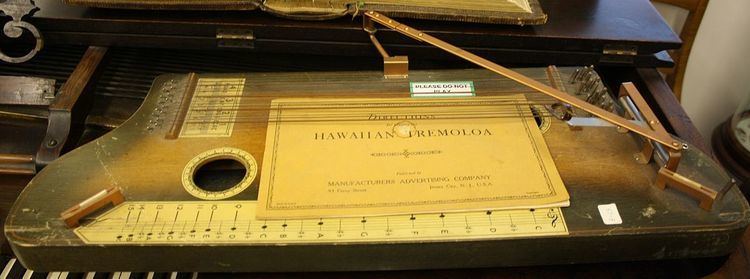Developed Early 20th century | ||
 | ||
Other names Hawaiian tremoloa, fr: Trémoloa Inventor(s) Harold Finney, John H. Large | ||
The tremoloa /ˈtreɪmoʊloʊwə/, plural tremoloas, is a stringed instrument belonging to the fretless zither family. It was produced in America in response to the rapid increase in popularity of Hawaiian music during the 1920s, and continued to be produced until the 1950s. Musical collective Broken Social Scene features the instrument in "Tremoloa Debut."
The tremoloa simulates the tonal effects of the Hawaiian steel guitar by passing a weighted roller stabilized by a swinging lever termed an arm, along a melody string. Following, moving the roller after plucking creates tremolo, an effect which gave rise to its name. Additionally, the tremoloa possesses four chords (C, G, F, and D major), to strum out the harmony.
The patent for the tremoloa was granted in 1932 to Harold Finney and John H. Large.
